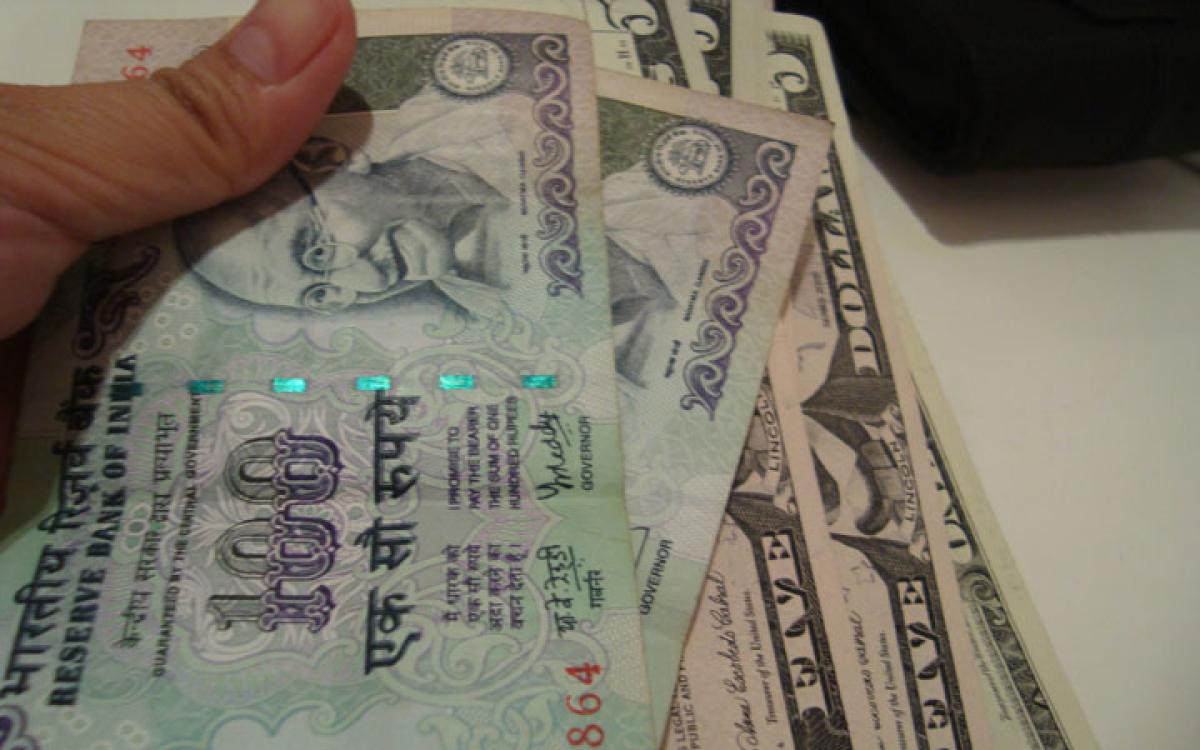Impact of exchange rate volatility

Consequently, Indian rupee weakened from Rs 66.235 to a US $ on January 1, 2016 to breach the psychological level of Rs 68 on January 27 for the first time since 28 August 2013 when rupee touched Rs 68.85. On February 17, it touched Rs 68.47, adding to the woes of exporters. The genesis of the recent saga of currency volatility, more particularly in emerging economies stems from US Central Bank Fe
Asset quality concerns in banks, depreciation of Indian rupee against US $, swings in stock market indices, strengthening gold prices, depleting exports, actions of key central banks across the globe have been hitting headlines, sending diverse signals to trade and commerce. Many get worried over weakening Indian currency even if they do not have exposure to foreign trade. Is it necessary to have a strong domestic currency against major international currency like US $. A look at its granularity and impact will indicate that the domestic currency should be well aligned (possess fair value) to the markets rather than the impression that it should necessarily remain strong. Ever since the Chinese currency was depreciated to a five-year low on January 6, 2016 calibrating it at 6.2 units of Renminbi to a US $, the exchange rates of local currencies across Asia began to tumble against US $ causing steep volatility in many currency markets. Indian is no exception due its interconnectedness with global trade.
Indian rupee movement
Consequently, Indian rupee weakened from Rs 66.235 to a US $ on January 1, 2016 to breach the psychological level of Rs 68 on January 27 for the first time since 28 August 2013 when rupee touched Rs 68.85. On February 17, it touched Rs 68.47, adding to the woes of exporters. The genesis of the recent saga of currency volatility, more particularly in emerging economies stems from US Central Bank Federal Reserve raising its benchmark interest rate by 25 basis points on December 16/17, 2015, for the first time since 2006.
Such a policy move began to shift the global investor sentiments from emerging markets to developed markets causing some exodus of foreign investments. Countries like India, China, Malaysia, Brazil Indonesia and Korea which are sitting on a pile of foreign investments have also been impacted.
Though according to RBI Governor’s opinion stated at Davos, as a policy, the central bank does not have a set Rupee target in mind. But it intervenes selectively to provide stability to the Indian currency despite its impact on domestic liquidity. Whenever RBI sells US $ to improve its supply to rein in its slippage, it sucks out liquidity from the market exacerbating liquidity crunch that impacts domestic supply of funds. It balances such intervention with open market operations (OMO) where it buys government bonds and infuses liquidity into the system.
How does India compare?
A comparison of depreciation of currencies would indicate that India is on a robust ground despite its current weakening trend. Between December 2014 to December 2015, Indian currency depreciated by 4.2 per cent as against China (Renminbi – 4.3 per cent), South Korea (Won - 6.6 per cent), Thailand (Baht – 9.4 per cent), Indonesia (Rupiah – 10.4 per cent), Malaysia (Ringgit – 22.6 per cent).
Due to lot of other macroeconomic factors, Brazil’s currency ‘Real’ had depreciated steeply by 43.9 per cent. It shows that among key emerging markets Indian currency depreciated the least, even a tad less than China and much less than even Euro – 13.6 per cent. Besides the direct measure of no of units of domestic currency versus US $, there are other methods of comparison to test its trends.
Relative value of rupee against US $
The nominal exchange rates illustrate the bilateral movement of the currency but are not sufficient. The Nominal Effective Exchange rate (NEER) and Real Effective Exchange Rates (REER) will amplify further. NEER is an index that measures the value of a currency against a basket of currencies whereas REER adjusts NEER for differences in the rates of inflation at home and abroad. The relative movement of currencies against US $ will give a better view of the value of the currency. The valuation of Indian rupee based on the 36 country (major trading partners) REER will provide the indication. The 36 country NEER index appreciated by 8 per cent moving up from 70 in September 2013 to 75.6 in November 2015 compared with 100 in 2004-05. In contrast, REER index appreciated by 14 per cent moving up from 101.2 to 115.2 during the same period which dropped to 112.86 in December 2015 compared with 100 in 2004-05. A level of 100 or slight variation would have been a fair valuation.
Obviously, the competitiveness of the Indian rupee has diminished or has depreciated relatively less than its counterpart countries during the last decade making imports from India more costly. The two critical indexes besides the nominal exchange trend indicate that Indian currency can be said to be still overvalued in relation to other trading partner countries.
Implications of valuation of rupee
If the REER index is much beyond 100, the exports may go down relative to the basket of 36 currencies unless there are other outweighing quality perceptions on Indian products. If exports go down, the foreign exchange earnings dip, widening the trade deficit. Though the current foreign exchange reserves of $349.15 billion as on January 29 is good but it has come down from $351.10 billion on December 25 due to sell off by Foreign Portfolio Investors (FPIs) and the trend may continue unless some reforms in the policy measures continue to attract foreign investments. In a depreciating volatile currency environment, the entrepreneurs dealing with overseas trade will have to hedge their exposure to mitigate exchange risk.
For example, if an entrepreneur imports goods worth $1 lakh when the currency is at Rs 66, he has to pay Rs 66 lakh for the deal. Suppose he has to pay it after 90 days. After 90 days if he finds that Rupee has depreciated to say Rs 70 to a US $ then he has to pay Rs 70 lakh for the transaction losing Rs 4 lakh in the deal. The other option is, he could have purchased $1 lakh, 90 days forward at a premium of say 40 basis points at Rs 66.40 from the forward market paying a forward premium. Even if the price of rupee 90 days later moves to Rs 70, he will still get $1 lakh at Rs 66.40, the agreed price. Similarly, the corporate who source overseas loans may also sustain exchange losses unless they remain fully-hedged.
In this way, the entrepreneur can hedge his exposure and restrict the exchange rate loss. At the same time, un-hedged forex exposure not only hurts entrepreneurs but can also impact asset quality of banks. The banks therefore have to ensure that their customers dealing in foreign currency manage to hedge their exposure to mitigate their losses. On the other hand exporters will be benefited due to depreciation of rupee. They can get more rupees for same number of US $.
Hence, in a globalised environment, entrepreneurs have to be sensitive towards movement of currency to avoid undue exchange rate risk. Despite the ongoing volatility and depreciation of rupee value against US $, there is no fear of undervaluation in the near term and is well in sync with currencies of trading partners.
(The author teaches at the National Institute of Bank Management (NIBM), Pune. The views are his own)














